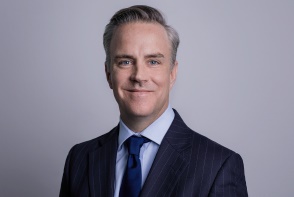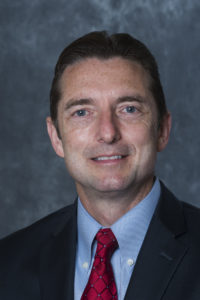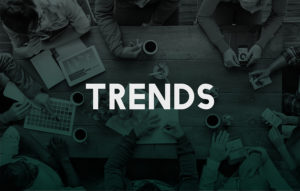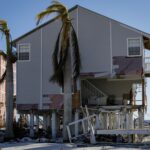Affiliating with The Institutes provides an opportunity for the industry’s Insurance Information Institute (III) to become more of a 21st Century trade association, rather than one suited for the 1950s, according to the III executive behind the move.
III CEO Sean Kevelighan said concerns over the 60-year old III’s future, its membership and a potential relationship with The Institutes have been matters of discussion for several years, even before he became CEO in 2016.
Kevelighan said the move to now affiliate is motivated by a desire to strengthen the III for the future by diversifying its revenues and offerings while also gaining efficiencies and opportunities through collaboration and sharing services with other affiliates at The Institutes.
The deal is not, he said, being undertaken because there has been a sudden deterioration in membership and finances since he took over, as suggested by his predecessor.
 Kevelighan said the mission of the III, or the Triple I as it has become known, remains to “get more information in front of media and consumers” so they are informed but to do so in a “21st century” way, including by adding more digital enhancements.
Kevelighan said the mission of the III, or the Triple I as it has become known, remains to “get more information in front of media and consumers” so they are informed but to do so in a “21st century” way, including by adding more digital enhancements.
“A lot of this affiliation is about modernizing to Triple I, modernizing the financial model and modernizing how we’re delivering news and information,” he told Insurance Journal in a phone interview a few days before Nov. 16, the day the marriage of III and The Institutes becomes official.
He stressed that the III and The Institutes have very similar missions and through their discussions they concluded that they could enhance each other’s work.
“We’re both information and education driven organizations,” he said. He said The Institutes does “great work” in research and education and has “very robust marketing and distribution skills.” Meanwhile, the Triple I has a “fantastic and trusted brand and voice” and knows how to communicate.
“Bringing these two together, we’re excited that we can enhance this for the industry.”
Institutes Overtures
Kevelighan said he and Peter Miller, CEO of the Institutes, have been talking for a few years about the possibility of the two organizations getting together.
Actually, he stressed, overtures from The Institutes pre-date his entering the picture as CEO in 2016 to succeed Robert Hartwig. “Communications from The Institutes were coming over even before I came on board because I think many people had already seen the synergies that you and I are talking about today,” Kevelighan said.
He disputed claims by Hartwig that the affiliation is a response to troubles of just the past few years.
“I’ve read some articles of yours [Carrier Management and Insurance Journal] previously that membership has only weakened in last four years, and I have to say that that’s absolutely not the case,” Kevelighan stated.
When the affiliation plan was announced in June, former CEO Hartwig told Carrier Management that III has experienced a deterioration of finances over the past four years “amid the withdrawal or announced withdrawal of at least 24 member companies, including numerous board-level members.”
Hartwig said that III has seen revenues fall and expenses grow the past four years, in contrast with the period 2007 through 2015 during which Hartwig said “the organization expanded its membership and its top line.”
In June, an III spokesperson replied that the organization had taken numerous steps under Kevelighan to improve its operations. “Among other efforts, we defined a new reserves approach, developed core key performance indicators, and formalized a process for CEO review and payment restructuring that will better sustain its financial footing,” said Michael Barry, III’s head of Media and Public Affairs.
Kevelighan is now pushing back harder on his predecessor’s assessment, suggesting the picture wasn’t as rosy as Hartwig painted it.
Without offering details, he said that since joining III he has uncovered that “professional deals were made” and there were “things that myself and the members of the board” found that were not as “transparent or fair as they should have been.”
He said he and the board have been working to “reestablish a lot of governance and transparency.”
Hartwig’s View
As reported by Carrier Management and Insurance Journal in June, Hartwig suggested that challenges over membership began in the last few years. But Kevelighan said that over-reliance on membership revenue has been an ongoing issue at the III. [ Editor’s note: Hartwig still strongly disagrees with Kevelighan’s take on what led to affiliation with The Institutes and posted lengthy comments on the Insurance Journal version of this story, which can be read at this link.]
Overall, according to tax filings with the Internal Revenue Service, III’s expenses have exceeded revenues from 2016 to 2018 by almost $3.7 million. III reported a shortfall of $1.7 million in 2016; $905,836 in 2017 and $1.0 million in 2018.

However, if III has been losing a lot of member companies recently, that has not appeared to cause any dramatic decline in dues income through 2018 at least. From 2014 to 2018, dues revenues from members have fluctuated between $8.9 million and $9.1 million except for a dip to $8.6 million in 2017. Filings for 2019 are not yet available.
Total revenues have also fluctuated from $9.4 million in 2014, $9.5 million in 2015 and $9.3 million in 2016, to $8.9 million in 2017 and $9.1 million in 2018. In addition to membership dues, III also has revenue from services performed for other organizations, fees from an annual joint industry conference and sales of publications.
However, salaries took a big jump from $5.5 million in 2015 to $6.4 million in 2016, then rose further to $6.9 million in 2017 before dropping to $6.1 million in 2018.
At the end of 2018, the Triple I had $16.2 million in assets and $6.3 million in liabilities.
Beyond Membership Dues
According to Kevelighan, trade associations need to diversity so they are not overly-dependent upon membership dues and affiliating with other associations is a way to accomplish this.
He said an organizational model that is heavily reliant upon membership dues as the Triple I has been is a model better suited to the 1950s than today.
Kevelighan thinks the III can learn from how The Institutes handles its diverse offerings that include education, research, publishing and conferences. “We invested the last couple of years in some of these types of opportunities on our own, and we just found that we can get to scale much faster if we come into The Institutes,” he said.
Kevelighan’s hope is that being part of an “enterprise-type structure like The Institutes” will enable efficiencies that in turn will allow III to dedicate more of its resources towards its mission, as opposed to operations.
He also thinks the affiliation can streamline things for the industry, which he said has more than 150 trade associations.
He said there was “significant board company and member overlap” between the two organizations. Going forward, III board members will become part of an Executive Leadership Council overseeing III. Kevelighan will continue to serve as III executive.
Tell Institutes Stories
The modernized III will be looking to help The Institutes tell the stories of its many components. The Institutes is best known as the home of the CPCU Society. But Kevelighan said “it’s important to recognize The Institutes is broader than the Society.”
The Institutes has expanded to include the Insurance Research Council, which does research related public policy; The Griffith Foundation, a public policy maker education platform and the International Insurance Society, which does policy work with a global perspective.
“Some of these other affiliates have really, really strong synergies with the Triple I, and we’re already in discussions and excited about being able to work together,” he said, adding he thinks this is a time when the industry and consumers are paying close attention to risk and risk management and insurance.
Kevelighan offered the III’s recent work on the Future of American Insurance and Reinsurance campaign as an illustration of the type of effort the III can be part of under the Institutes umbrella. This campaign — at fairinsure.org — has been addressing insurance issues related to the COVID-19 crisis, with a particular focus on business interruption losses and why the insurance industry itself cannot address this crisis alone and the government must be part of any solution.
Some things won’t change for now. For the most part, the III staff and offices will remain. Also, III’s annual Joint Property/Casualty Insurance Conference will also be held—virtually—in January.
Other Mergers

Kevelighan noted that other trade associations are also deciding to merge or affiliate, sometimes as a reflection of consolidation in the overall economy and their own industries. Other associations “have changed their model and they have looked at ways to diversify and diversify revenues so that the membership commitment is less,” Kevelighan told Insurance Journal.
While the property/casualty insurance industry has experienced consolidation among carriers over the years, the industry overall remains fragmented.
But there have been some major insurance trade association mergers.
The 350-member Property Casualty Insurers Association of America and the 330-member American Insurance Association merged effect Jan. 1, 2019 to form the American Property Casualty Insurance Association, with a membership representing 60 percent of the property/casualty insurance market.
In August 2017, the American Association of Managing General Agents (AAMGA) and the National Association of Professional Surplus Lines Offices (NAPSLO) merged to create the new Wholesale & Specialty Insurance Association (WSIA).
In 2018, the Financial Services Roundtable (FSR) and The Clearing House (TCH) announced plans to merge their association activities. FSR members include many of the same large banks that belong to TCH as well as insurance, asset management, finance and credit card companies.
The Institutes has been a leader in absorbing associations and insurance nonprofits. In the past several years under Miller, the Institutes has added various organizations and firms including the Insurance Research Council, Insurance Thought Leadership, the Pacific Insurance Conference, Claims and Litigation Management Association, the International Insurance Society, the National Workers’ Compensation and Disability Conference, and the National Ergonomics Conference, as well as several insurance risk management publications.
*This story ran previously in our sister publication Insurance Journal.




















 If U.S. Inflation Reflected Rising Home Insurance Costs, It’d Be Even Higher
If U.S. Inflation Reflected Rising Home Insurance Costs, It’d Be Even Higher  Viewpoint: Risks for D&O Insurers Exploring the New Frontier of Gen AI
Viewpoint: Risks for D&O Insurers Exploring the New Frontier of Gen AI  Allstate’s Safe Driving App Helps Reduce Chance of Collision by 25%
Allstate’s Safe Driving App Helps Reduce Chance of Collision by 25%  AI-Powered Insurance Product Development Is Going to Take Some Powering Through
AI-Powered Insurance Product Development Is Going to Take Some Powering Through 





